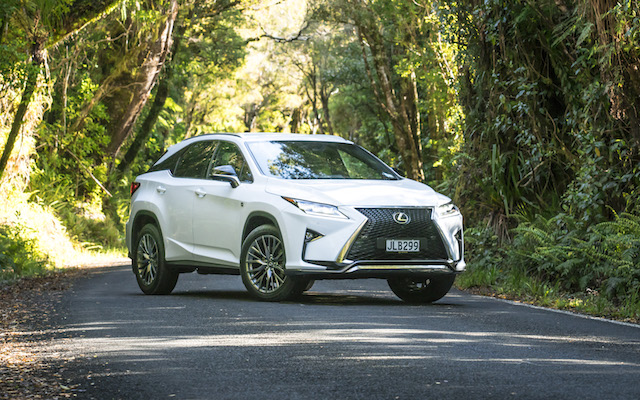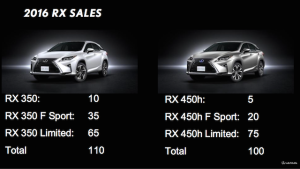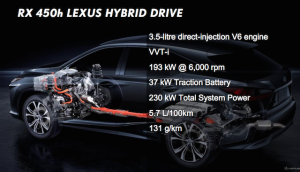
The continuing dominance of SUVs on the motoring landscape in New Zealand is nowhere more apparent than in the way Lexus is looking at the number of vehicles it expects to sell in 2016.

The luxury nameplate’s planners are aiming for 650 sales – 475 of which will be SUVs. That’s around 73 per cent SUVs, 27 per cent the rest. Whichever way you cut the projections, three out of every four Lexus sales next year will be SUVs.
The simple explanation for such a top-heavy pie chart is that SUVs are what buyers want and Lexus, like most other carmakers, continues to add to the choices. Or it is now that it has the NX and RX, its front-running SUVs.
The NX is the smaller of the two and went on sale earlier in the year. It is a new, first-generation nameplate, late to the upmarket SUV party but sweet-talking its way in.

The RX badge is not new. It first appeared in NZ in 2003, pioneering the luxury 4WD ‘soft-roader’ segment. It has since largely anchored Lexus’ annual sales, with a best in 2007 of 250 RX units.
Now the fourth-generation RX (code for ‘recreational cross country vehicle’) is here. It is a distinctly individual design, with creases and curves all finding their way along the body from the bold spindle grille up front.
It is obvious Lexus designers didn’t want it to be ignored. If it was a suit it would be Armani-like, a sharp, eye-catching blend of wool and silk. The RX of 2003 was more polyester and rayon.

Lexus NZ sales executive Steve Prangnell expects the RX to sell around 210 units next year and the NX 265. “The SUV juggernaut keeps on rolling, up 16 per cent year-on-year to a 44 per cent share of the luxury market,” he says.
“It’s the highest ever share, meaning that almost every second luxury car sold today is an SUV of some shape or size. Lexus SUV sales in 2015 have been tracking at a staggering 65 per cent of our mix – well above the average – and of course we’re about to be better placed than ever to make the most of the demand for luxury SUVs.”

The new RX is longer, wider, and taller than the outgoing model. The wheelbase is longer, too, by 50mm. The bigger dimensions mean more interior room. Lexus says front and rear legroom and head room has improved by at least 50mm.
The range in New Zealand consists of six models: RX 350, RX 350 F Sport, RX 350 Limited, RX 450h, RX 450h F Sport, RX 450h Limited, all rated Euro6 for emissions and riding on 20-inch alloys.
The 350 series uses a 3.5-litre petrol V6 delivering 221kW at 6300rpm and 370Nm between 4600-4700rpm and mated to an eight-speed conventional automatic transmission. Claimed fuel use is 9.6 litres/100km.

The 450h petrol-electric range gets a 3.5-litre V6 with a continuously variable transmission (CVT). Total output is 230kW – 193kW at 6000rpm from the direct-injection engine and 37kW from the battery pack. Town-and-around fuel use is said to be 5.7 litres/100km.
Take it as read that in terms of equipment and bells and whistles the RX range comes with Uncle Tom Cobley and all. It is a lavish package. The standard RX is chockerbloc with up-to-the-minute stuff, along with 10 airbags among the many active and passive safety aids.
F Sport adds things like sportier drive modes with paddle shifters, adaptive suspension, active stabiliser, colour head-up display, and all-round view camera. Limited throws in a adaptive high beam system, panoramic roof, four-way lumbar support up front.

Lexus launched the RX between Auckland and the Coromandel. It quickly became evident than it rides, handles, and brakes better than the outgoing model. It might be in the ‘soft-roader’ category, but it can hunker down and hustle.
The 350 F Sport is dynamically the best. At 2085kg it is roughly 130kg lighter than the 450h hybrid and its battery pack. It’s not a huge difference in weight, but it is noticeable, especially pushing on.
